Are your marketing efforts not reaching the right audience or delivering the impact you hoped for? Many businesses face this same challenge – unsure how to expand their reach without stretching the marketing budget too thin. That’s where partnership marketing can help. It lets you tap into new audiences, share resources, and create campaigns that drive real results.
Whether you’re new to partnership marketing or looking to improve your approach, you’re in the right place. In this article, we’ll show you how to use affiliate marketing and influencer partnerships to grow your brand, reach new customers, and build lasting partner relationships.
What Is Partnership Marketing
Partnership marketing is a collaborative strategy where 2 or more businesses work together to achieve mutually beneficial goals. In this strategy, you align your efforts around shared objectives like co-branded campaigns, joint ventures, or collaborative content. It helps you reach new audiences, share marketing costs, and boost brand credibility by associating with reputable partners.
A successful partnership marketing strategy is built around 5 key elements that help both partners achieve their goals:
- Aligned Goals & Objectives like increasing brand awareness or sales.
- Complementary Strengths where one offers a product, the other access to a new audience.
- Clear Communication & Roles to avoid confusion and ensure a strategic collaboration.
- Mutual Trust & Transparency through shared expectations.
- Performance Tracking & Accountability to ensure both marketing partners are meeting their goals.
4 Reasons Why Partnership Marketing Is Essential For Your Business Growth
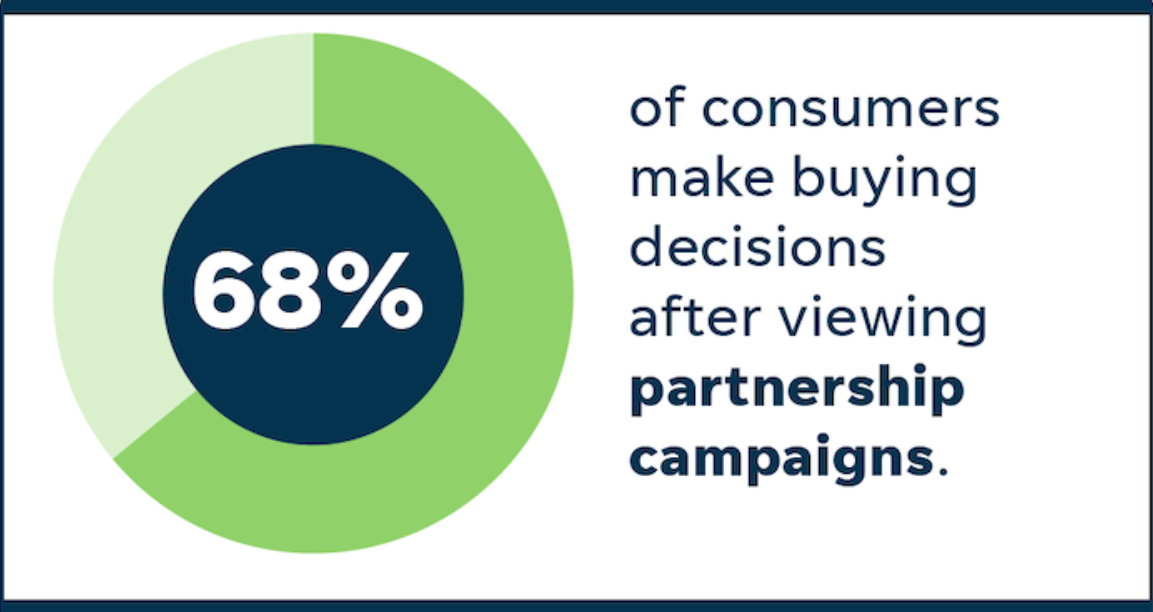
68% of consumers make their buying decisions after seeing partnership campaigns. If you’re not sold on the idea yet, here are 4 more reasons why partnership campaigns are a great move for you:
i. You Expand Your Reach
When you partner with another brand, you tap into their audience and introduce your business to new potential customers that you might not reach on your own. It’s an easy way to broaden your market and increase visibility.
ii. You Save on Costs
Instead of covering all the marketing expenses yourself, you share the costs with your partner. Whether it’s a joint campaign or a co-branded product, the financial burden is split, so you get more results with less investment.
iii. You Build Credibility
When you team up with a trusted brand, their reputation can boost your own. Customers will trust your business when they see you working with a company they already respect.
iv. You Spark Innovation
2 brands bring different strengths and ideas to the table. You can create new, innovative products or campaigns that wouldn’t be possible on your own through partnerships.
8 Types Of Partnership Marketing That Can Enhance Your Brand Visibility
As you explore the different types of partnership marketing, think about how each can align with your long-term business goals. Whether you’re looking to co-brand with another company or tap into affiliate marketing, the right partnership will expand your reach.
1. Affiliate Marketing
Affiliate marketing is a performance-based marketing strategy where businesses partner with individuals or other companies (affiliates) to promote their products or services. The affiliates earn a commission for driving traffic, leads, or sales through their unique referral links. It works in 4 simple steps:
- Affiliate joins the company’s affiliate program and receives a unique tracking link or code.
- The affiliate promotes the company’s products or services via blogs, social media, emails, or websites.
- When someone clicks on the affiliate’s link and makes a purchase, the transaction is tracked.
- The affiliate earns a commission, which is either a percentage of the sale or a flat fee.
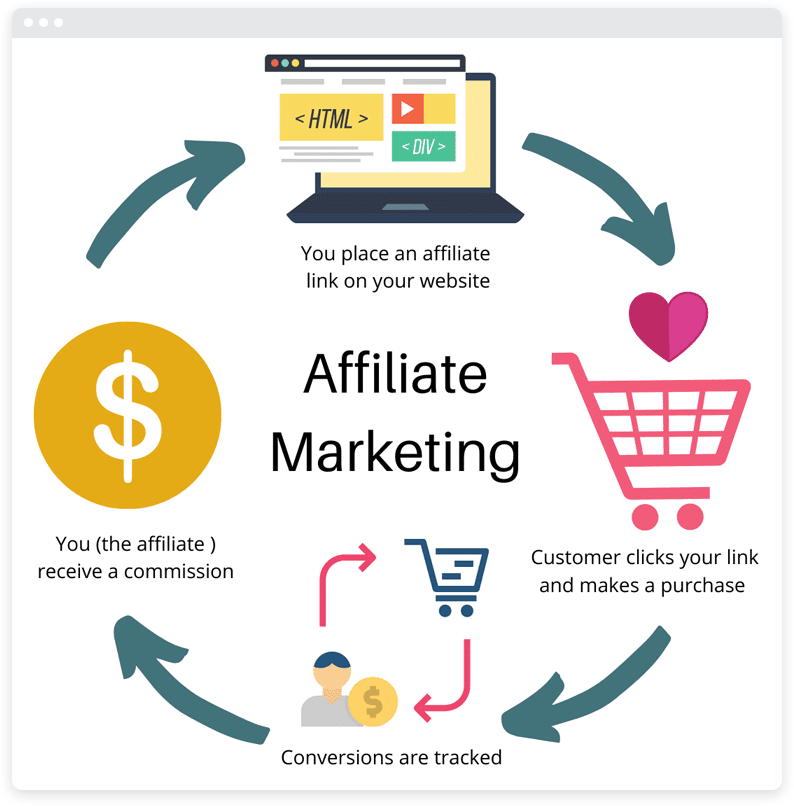
The beauty of affiliate partnerships is that they are low-risk for the business. The commissions are only paid when sales are made and affiliates get to earn passive income by promoting products they believe in.
For example, a tech reviewer creates a blog post reviewing the latest gadgets and includes an Amazon affiliate link for each product mentioned. When readers click the link and purchase the item, the reviewer earns a commission.
2. Sponsorship Partnership
Sponsorship is a marketing strategy where a business provides financial or in-kind support to an event, individual, or organization in exchange for brand visibility and association. It’s a way for companies to gain exposure by aligning their brand with a cause, event, or entity that resonates with their target audience. Here’s how sponsorship collaboration works:
- A company sponsors an event (like a sports tournament, concert, or conference), a cause (like a charity or environmental initiative), or even an individual (like an athlete or influencer).
- In return, the sponsor’s brand is prominently displayed or mentioned in various marketing materials like banners, websites, and promotional content. The goal is to increase awareness and build a positive association with the event or cause.
- The event or organization gets the support it needs, and the sponsor gains access to a targeted audience and the credibility boost of being linked to something meaningful or prestigious.
3. Influencer Partnerships
Influencer partnerships are marketing collaborations between brands and individuals who have a strong online presence and influence over a specific audience. The influencer marketing industry reached $21.1 billion in 2023, and it’s only going to keep growing. So partnering with the right influencers is more important than ever if you want your brand to stay competitive.

Influencers like bloggers, YouTubers, Instagram personalities, or TikTok stars promote a brand’s products or services to their followers in exchange for compensation like money, free products, or experiences. Here’s how influencer partnerships work:
- Find the influencers whose audience aligns with your target market to make sure they share your brand’s values and can authentically promote your products.
- Influencers create engaging content like posts, videos, or stories that feature your products. The key is for the content to feel genuine to resonate with the audience.
- The influencer shares this content with their followers and includes a call-to-action like a discount code or product link to encourage sales or visits.
- Use affiliate links, discount codes, or engagement metrics (likes, shares, comments) to measure the partnership’s success and see how many conversions it generates.
This post from @elliesfragrancediary is a perfect example of sponsored influencer marketing. In this collaboration, Ellie highlights Shay and Blue’s values, including their commitment to clean, organic, vegan, and cruelty-free products, while providing an authentic review of the Salt Caramel fragrance.
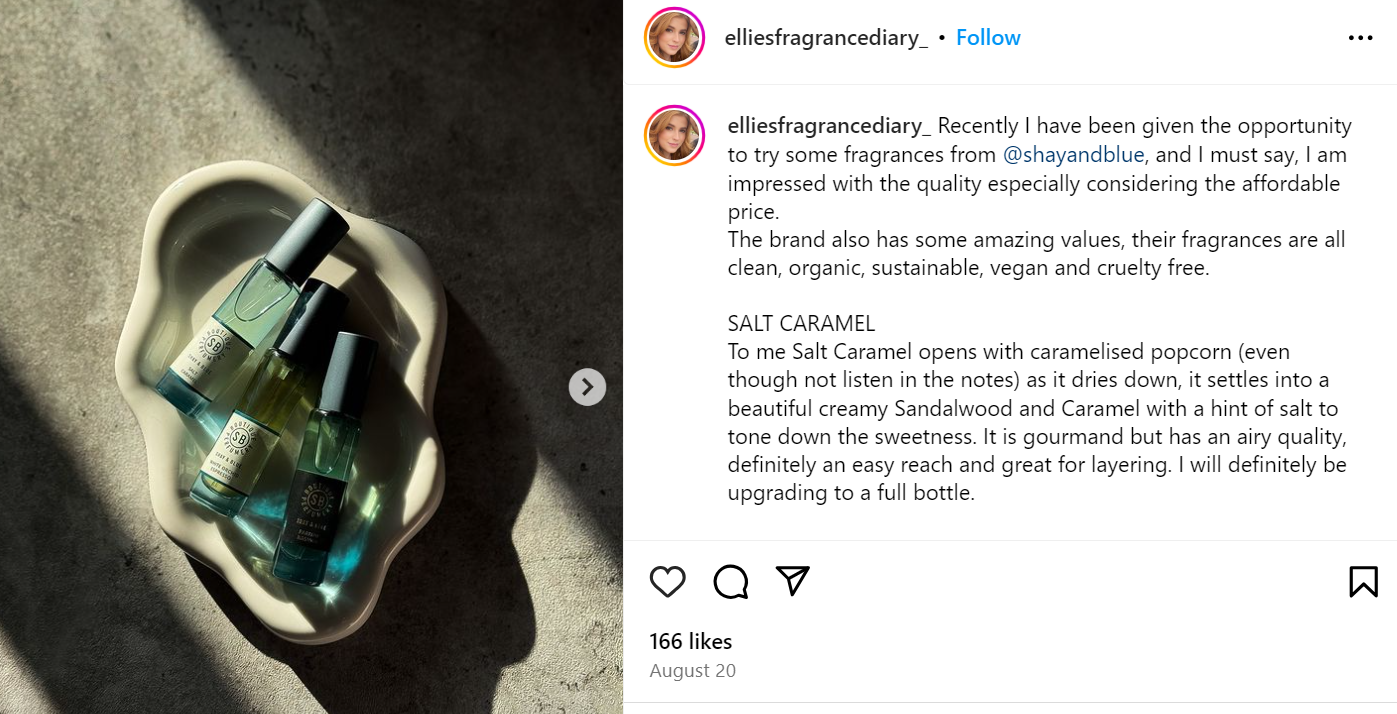
This partnership benefits both parties: Shay and Blue gains exposure to Ellie’s followers, and Ellie provides valuable content to her audience by sharing a product that she truly believes in.
4. Co-branding Partnership
Co-branding is a marketing strategy where 2 or more brands collaborate to create a unique product, service, or campaign that combines their strengths. The goal is to create something that neither brand could achieve independently, so it delivers mutual value to both businesses and their customers.
Co-branding can take various forms, like product co-branding (a new product from both brands), marketing co-branding (joint campaigns), or event co-branding (hosting or sponsoring events together).
Escort Radar delivered exceptionally well with its collaboration with SquadDriven and CyMedia, proving how powerful the right partnership can be – especially when you’re in a niche market like radar detection. Instead of just relying on traditional ads, they tapped into what really matters: community and connection.
SquadDriven brought in a community of car enthusiasts who are always on the lookout for gadgets that make their driving experience better. By partnering with them, Escort Radar was engaging with people who actually care about radar detection tech. This is important because, for products like this, it’s not about appealing to everyone – it’s about reaching the people who understanf it.
CyMedia brought that tech to life. Their top-notch videography showed Escort’s radar detectors in action, making the benefits crystal clear. It was about how it fits into a driver’s lifestyle, which made it way more relatable and exciting.
This smart, creative collaboration gave Escort Radar the chance to not only boost its visibility but also build real trust with its target market. When you’re dealing with something as specific as radar detectors, reaching the right crowd with the right message is everything, and that’s exactly what Escort Radar pulled off.
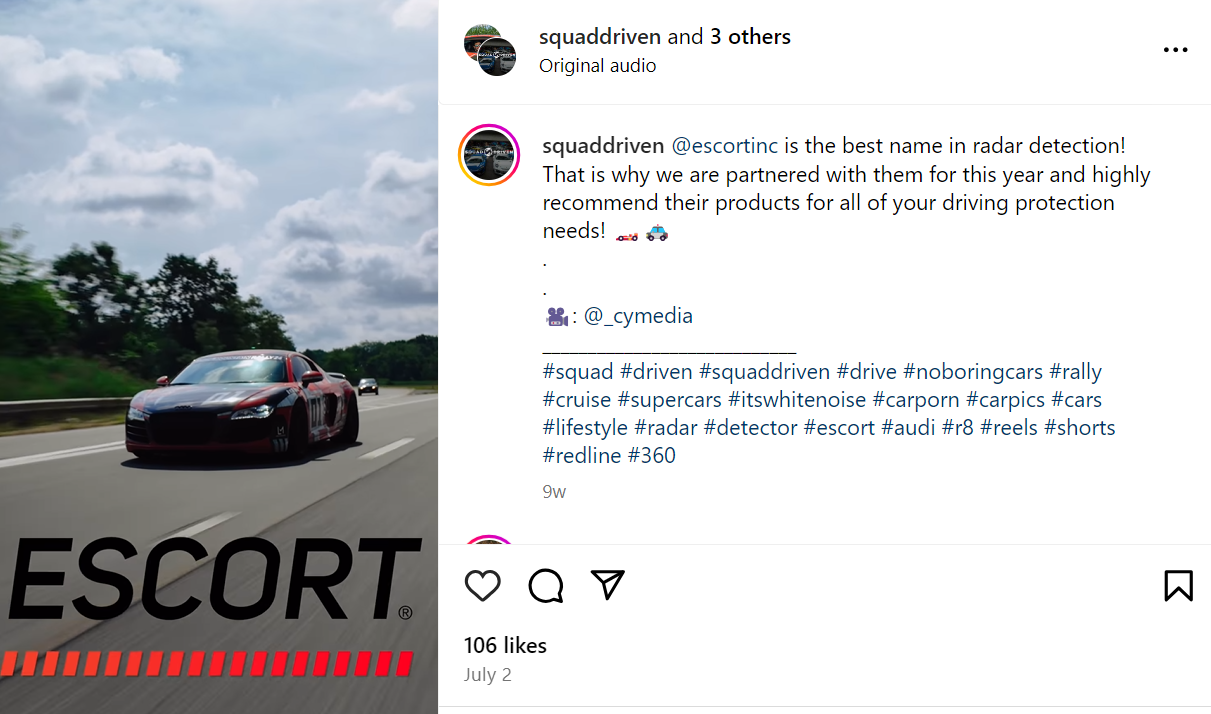
5. Distribution Partnership
A distribution partnership is a business agreement where one company partners with another to help distribute its products or services to new markets, regions, or customer segments. This partnership type helps businesses expand their reach without building their sales or distribution channels from scratch. Here’s how a distribution partnership works:
- The distributing partner uses their established networks, retail outlets, or online platforms to sell your product, helping you tap into markets where you don’t have a presence.
- Instead of setting up your distribution infrastructure, you leverage your partner’s existing logistics, warehousing, and sales teams.
- Your partner benefits by offering new products to their customers, while you access new markets with lower risk and investment.
For example, a small tech company can partner with a larger retailer like Best Buy to distribute their gadgets. Best Buy’s vast customer base and retail locations provide a platform for the smaller company’s products to reach more buyers.
Similarly, Peloton, known for its fitness equipment like bikes and treadmills, teamed up with Dick’s Sporting Goods in 2022. Peloton sells its products through Dick’s stores, so more customers can try the equipment in person, increasing their chances of making a purchase and boosting brand visibility.
For Dick’s Sporting Goods, having Peloton’s premium fitness gear in-store attracted more fitness enthusiasts and increased foot traffic and sales.
6. Referral Marketing
Referral marketing is a strategy where businesses encourage their existing customers or partners to refer new customers to their products or services. In return, the referrer receives a reward like a discount, gift, or commission.
It uses word-of-mouth and personal recommendations, making it a powerful way to acquire new customers who trust the opinions of those referring to them. Plus, referral customers tend to stick around longer, with a 16% higher customer lifetime value (CLV) compared to non-referred customers. Here’s how referral partnerships work:
- A business sets up a referral system where customers or partners are motivated to refer others, often through incentives like discounts or bonuses.
- Each referrer is given a unique link or code to share so the business can track how many new customers come through their referrals.
- When a referred customer makes a purchase or takes a desired action, the referrer gets their reward like cash, discounts, or other perks.
Eden Emerald Mortgages is a prime example of how referral marketing can work wonders, especially in the mortgage industry where trust and personal connections are everything. It’s about building a system where everyone wins, and that’s exactly what Eden Emerald has mastered.
Eden Emerald partners with over 40 lenders to offer clients the best home loan options. But here’s where they really shine—they’ve turned this process into a powerful referral engine. When they connect a client to a lender and a loan gets approved, the lender pays them a referral fee. But it goes deeper than that.
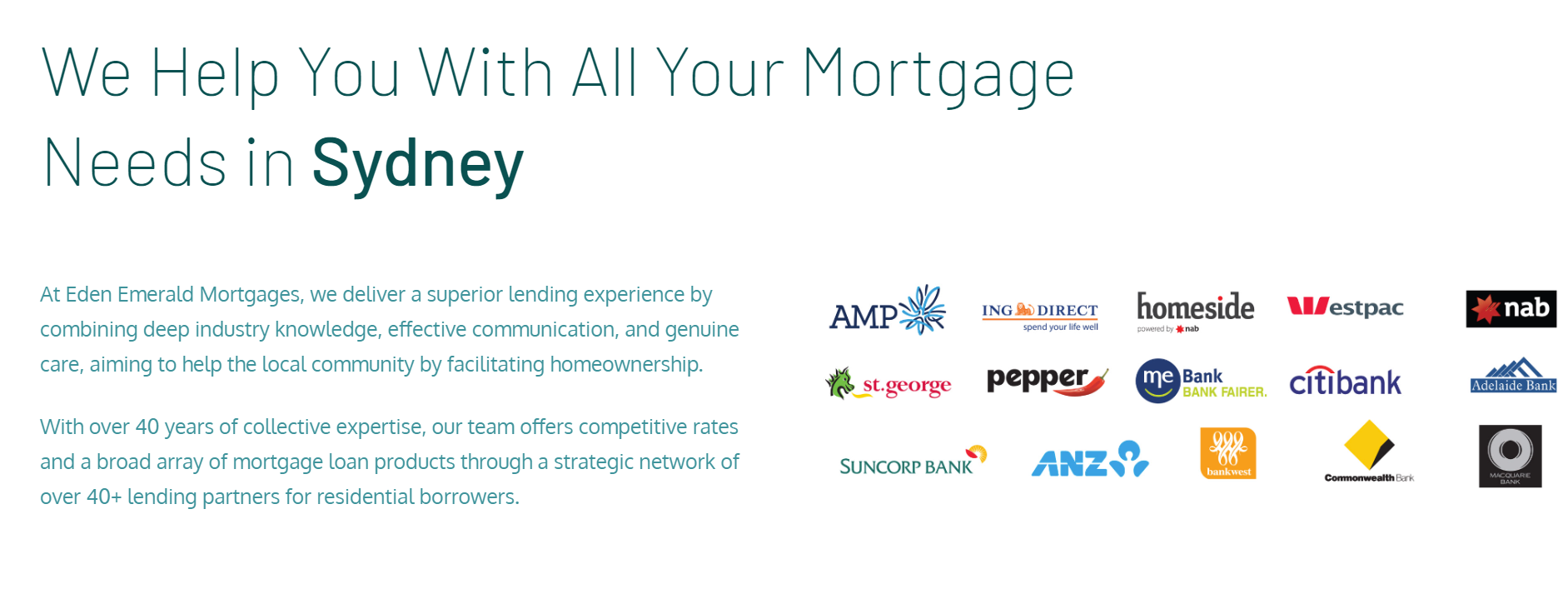
For clients, the benefit is clear – they get access to competitive rates across a wide network of lenders, making their home loan search much easier. On the other hand, the lenders benefit from a steady flow of qualified leads without having to chase down customers themselves. Eden Emerald becomes the connector, ensuring both sides get exactly what they need.
For a business like Eden Emerald, referral marketing is the core of what they do. In the mortgage world, people trust referrals because choosing a loan is a big, often stressful decision. Word-of-mouth and trusted recommendations matter here more than most industries.
That’s why Eden Emerald’s approach works so well. They create a cycle where satisfied clients refer others, and lenders keep coming back for more qualified customers, creating a win-win ecosystem.
7. Loyalty Programs
Loyalty programs encourage customers to continue purchasing from a business by offering rewards for their repeat patronage. These programs incentivize customers to engage with the brand regularly, creating long-term relationships and boosting customer retention. Here’s how a loyalty program works:
- Customers earn points or rewards every time they make a purchase or engage with the brand (ex. through social media, referring friends, or leaving reviews).
- These points are redeemed for discounts, free products, exclusive offers, or other perks. This encourages customers to continue buying from the business.
- Some loyalty programs have tier systems where the more a customer spends, the higher they climb. As they move up, they unlock bigger rewards like VIP events or early access to sales.
Types of Loyalty Programs
- Point-based Programs: The most common type where customers earn points for purchases and actions, which they can later redeem for rewards.
- Cashback Programs: Customers receive a percentage of their purchase amount back as a credit or cashback, which they can use for future purchases.
- Tiered Programs: Based on spending, customers are placed into different tiers, with each level offering greater benefits (ex. basic, gold, platinum levels).
- Punch Card Programs: These are simple and commonly used by small businesses. Customers get a “punch” for each purchase and receive a reward after a certain number of purchases (ex. buy 10, get 1 free).
For example, Starbucks Rewards lets customers earn stars with each purchase, which they can redeem for free drinks, food, or exclusive offers. Their program has a tiered structure that offers higher rewards for more frequent customers like access to exclusive offers or birthday rewards.
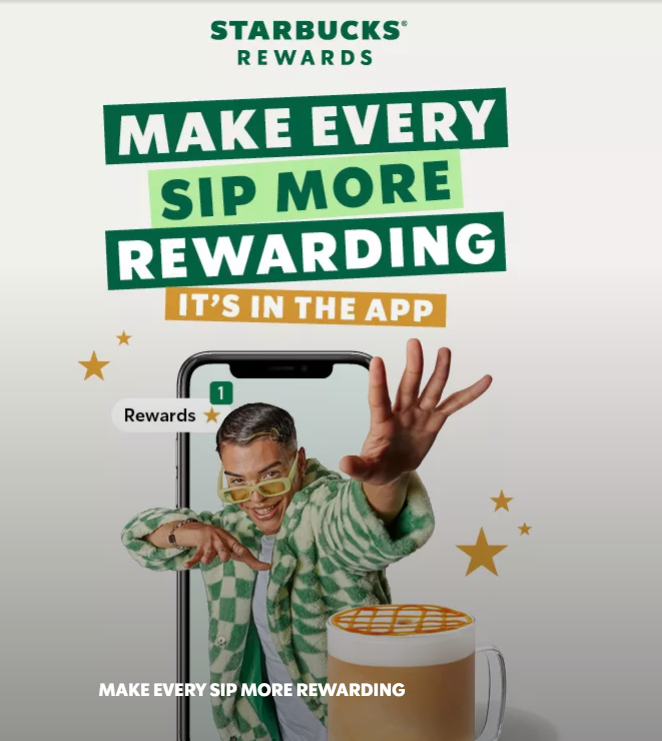
8. Licensing Partnership
Licensing is a business arrangement where one company (the licensor) grants another company (the licensee) the legal rights to use its brand, intellectual property, product, or technology in exchange for a fee or royalty.
This strategy helps the licensor to expand its brand presence or product distribution without directly investing in new markets or production capabilities. Here’s how licensing works:
- The licensor grants rights to use its intellectual property like a brand name, logo, product design, or patented technology. This agreement is usually outlined in a legal contract.
- In return for these rights, the licensee pays a fee or royalty to the licensor. This can be a fixed fee, a percentage of sales, or a combination of both.
- The licensee can produce, market, and sell products using the licensor’s brand or technology. The licensor benefits from increased brand visibility and revenue, while the licensee gains access to a well-established brand or technology.
A great example of licensing is Disney. They license their characters for use in merchandise like toys, clothing, and games that other companies produce.
6 Best Practices To Build A Successful Partnership Marketing Strategy
Here are 6 best practices to help you build a successful partnership marketing strategy. Follow these steps to make sure your business partnership delivers real value:
I. Choose The Right Partner
Start by finding a brand that complements your business, whether through similar values, overlapping audiences, or complementary products. Look for partners who share your goals and have strengths that balance your weaknesses.
To find the right partner, research potential brands in your industry, attend networking events, or explore your existing business relationships. When choosing, ask yourself, “Can this partner help me reach new customers or enhance my brand?”
II. Set Clear Goals & Expectations
Before launching your partnership, sit down with your partner and define exactly what you both want to achieve. Are you aiming to increase brand recognition, drive sales, or launch a new product? Create a shared action plan that outlines roles, responsibilities, and timelines. This keeps everything organized and ensures you are both on the same page from day one.
III. Establish Open Communication
Keep the lines of communication open throughout the partnership. Schedule regular meetings or calls to discuss progress, share updates, and tackle challenges that arise. Transparency is key—when both sides are informed, issues can be resolved quickly, and collaboration runs smoothly.
IV. Create A Win-Win Situation
Make sure the partnership is mutually beneficial. For example, if you’re offering exposure to your audience, what are they offering in return? Consider both sides’ goals and ensure the benefits are clear to each of you. This could mean a revenue split, access to new markets, or shared costs. When both parties gain equally, you build a stronger, long-lasting relationship.
V. Track & Measure Success
Define KPIs from the start so you can measure whether the partnership delivers the desired results. This will include tracking sales, website traffic, or customer engagement.
For example, if your partner promotes your product through an email campaign, you can follow up with retargeting ads to reach people who clicked on the email but didn’t make a purchase. Use tools like Google Analytics or CRM software to monitor progress and adjust your strategy to stay on track.
VI. Nurture The Relationship
Don’t treat the partnership as a one-time deal. Invest in the relationship by keeping in touch even after a campaign ends. Check in with your partner, share insights, and look for new opportunities to collaborate. Build a long-term relationship for more success down the road.
Conclusion
As you implement these techniques, think about how your business can benefit from forming authentic marketing partnerships that go beyond just one campaign.
As you explore partnership marketing strategies, have you thought about how your online presence impacts your ability to attract the right partners? A strong, memorable domain name will build credibility and showcase professionalism to potential partners.
Visit ShortDot now and find out about our innovative domain extensions that will make a lasting impression and set the stage for successful partnerships.
Author Bio:

Burkhard Berger
Burkhard Berger is the founder of Novum™. He helps innovative B2B companies implement modern SEO strategies to scale their organic traffic to 1,000,000+ visitors per month. Curious about what your true traffic potential is?Gravatar: vip@novumhq.com
